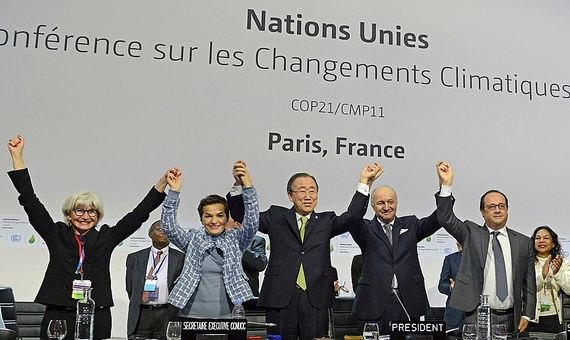On 11 December 2020, on the occasion of the fifth anniversary of the Paris climate change agreement—which aims to limit global temperature rise to below 2 °C and preferably 1.5 °C above pre-industrial levels—UN Secretary-General António Guterres called for “the world’s most urgent mission”: “We need to build a truly global coalition for carbon neutrality by 2050.” Carbon neutrality means not only radically reducing greenhouse gas (GHG) emissions, but also offsetting residual emissions with carbon capture and storage and other systems, so that the end result is climate neutrality—or, in the expression most commonly used today, “net zero”. It is certainly a big idea towards a more sustainable world in a decarbonised society.
However, the problems arise when the discourse and the reality do not seem to mesh. On the one hand, Guterres explained, nations that account for more than 65% of GHG emissions and 70% of the global economy have endorsed the goal of achieving net zero by 2050. This coalition includes the European Union, the United Kingdom, Japan, South Korea, the new US administration under President Joe Biden and a total of 131 countries; even China, the world’s largest GHG emitter with 28% of the global total, has committed to begin cutting its emissions within the next ten years and to reach carbon neutrality by 2060, although the feasibility of this goal has been questioned.
Is the Paris Agreement target being met?
On the other hand, however, the Secretary-General warned that climate indicators have only worsened. Even with the COVID-19 pandemic, Guterres pointed out, atmospheric CO2 levels set records and continue to rise; the past decade was the warmest in recorded history, Arctic ice reached an all-time low in October 2020, catastrophic climate anomalies are becoming more frequent, “biodiversity is collapsing, deserts are spreading, oceans are warming and choking with plastic waste.” He rounded it all off with an eye-opening fact: according to science, all this will continue to get worse unless fossil fuel production is cut by 6% every year between now and 2030. But very much to the contrary, the current trend is an annual increase of 2%.

Faced with all this, people are naturally confused, if not deeply puzzled: scientists publish studies, monitor the evolution of indicators and propose guidelines; agreements are made and conferences are held; at least since the Rio summit in 1992, national authorities and international bodies have been nodding and responding to the call of the experts, setting regulations and establishing milestones and roadmaps. And while all this activity might give the impression that solutions are in place and headway is being made, the evidence suggests that there has not been a shred of progress towards the desired goals. This can leave the average person with a sense of helplessness that can lead to scepticism and apathy, especially when they are told that their involvement is also important.
Net zero: halfway between utopia and reality
Is net zero an unattainable utopia, a frustrated goal, or simply a misguided concept? For a number of experts, it is bit of all of these. Climate neutrality or net zero has its roots in the idea of offsetting emissions by means of systems that remove atmospheric CO2. Initially, this terminology, still used today, was applied to carbon sequestration in forests, which has led to countless reforestation proposals that have endured to the present day, even though experts have repeatedly warned that planting trees alone is neither a feasible nor a scientifically proven solution for tackling climate change.
This was followed by other carbon capture and storage proposals, starting with the most immediate: preventing the emission of CO2 into the atmosphere from coal-fired power plants by burying it underground. Since the 1970s, CO2 injection has been used to facilitate the extraction of crude oil trapped in underground pockets, so the idea was to apply the same technique solely to the storage of the gas. Then it was thought to replace the coal in these power plants with biomass, so that the carbon captured would be locked safely underground. Then came the proposal for the direct capture of CO2 from the air. Finally, we are now debating the use of climate geoengineering to reduce, for example, the absorption of solar radiation by the Earth.

Faced with such a list of proposals, one might think there would be plenty to choose from. The problem is that virtually none of the above currently exists, or at best is only at a pilot project or experimental stage, while ideas such as biomass have lost their shine because their harm, such as extensive land use, may outweigh their benefits.
The additional problem is that, as climate scientists James Dyke (University of Exeter), Robert Watson (University of East Anglia) and Wolfgang Knorr (Lund University) point out in The Conversation, the mathematical predictive models used by researchers have for decades incorporated these assumptions as if they were real, which they are not, resulting in allowable emissions quotas that are completely unacceptable, given that no carbon is being sequestered. In short, these models provide nations with “a blank cheque for the continued burning of fossil fuels” so that changes are limited to “those most convenient to politicians: incremental changes to legislation and taxes.”
Thus, the three scientists conclude, the concept of net zero is a “dangerous trap”; “in practice, it helps perpetuate a belief in technological salvation and diminishes the sense of urgency about the need to curb emissions now.” In fact, admits Knorr, who acknowledges himself as one of the experts who originally helped spread the idea of net zero, “I’m almost more scared by the consequences of net zero than by those of climate warming.” Dyke adds: “It’s astonishing how the continual absence of any credible carbon removal technology never seems to affect net zero policies.”
Decarbonising the world through technology, research and realism
Naturally, scientists support and encourage research into such technologies, around which any practical and realistic breakthroughs in large-scale deployment would be welcome. But in recent years there has been a growing awareness among the scientific and expert community that carbon neutrality, net zero, is “a lie”, as energy and environmental economist Claudia Kemfert of the German Institute for Economic Research bluntly puts it in Nature: “We must cut carbon emissions to zero in absolute terms, not merely to net zero,” she writes.

Interestingly, even the bodies that champion the drive towards net zero embrace the contradiction; on its website, the European Parliament asserts that carbon neutrality by the middle of this century is essential, while acknowledging: “To date, no artificial carbon sinks are able to remove carbon from the atmosphere on the necessary scale to fight global warming.” The UN itself, while pushing its Net-Zero Coalition, admits that the sum of emission reductions announced by countries “still fall far short of the level of ambition needed to achieve the 1.5 °C goal.” More specifically, and faced with the need to slash global emissions by 45% by 2030 compared to 2010 to meet the Paris target, the combination of currently determined national contributions would only achieve a 1% reduction.
In short, the current thinking in the expert community does not support the idea that the concept of carbon neutrality or net zero is a feasible reality today in order to meet the target of the Paris agreement, and therefore the idea itself may actually do more harm than good by diverting attention from the only visible path towards that goal, the one that since the beginning of the history of the fight against climate change has been the universally accepted criterion: drastically reducing emissions, which requires abandoning as soon as possible and for good the extraction and use of fossil fuels.
Comments on this publication